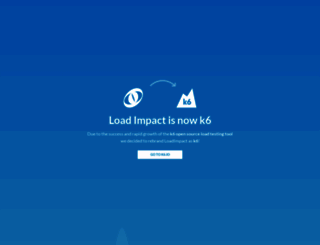Load Impact is now k6
Page Load Speed
1.2 sec in total
First Response
11 ms
Resources Loaded
885 ms
Page Rendered
346 ms

About Website
Click here to check amazing Load Impact content for India. Otherwise, check out these important facts you probably never knew about loadimpact.com
Due to the k6 open source load testing tool's success and rapid growth, we decided to rebrand LoadImpact as k6.
Visit loadimpact.comKey Findings
We analyzed Loadimpact.com page load time and found that the first response time was 11 ms and then it took 1.2 sec to load all DOM resources and completely render a web page. This is quite a good result, as only 25% of websites can load faster.